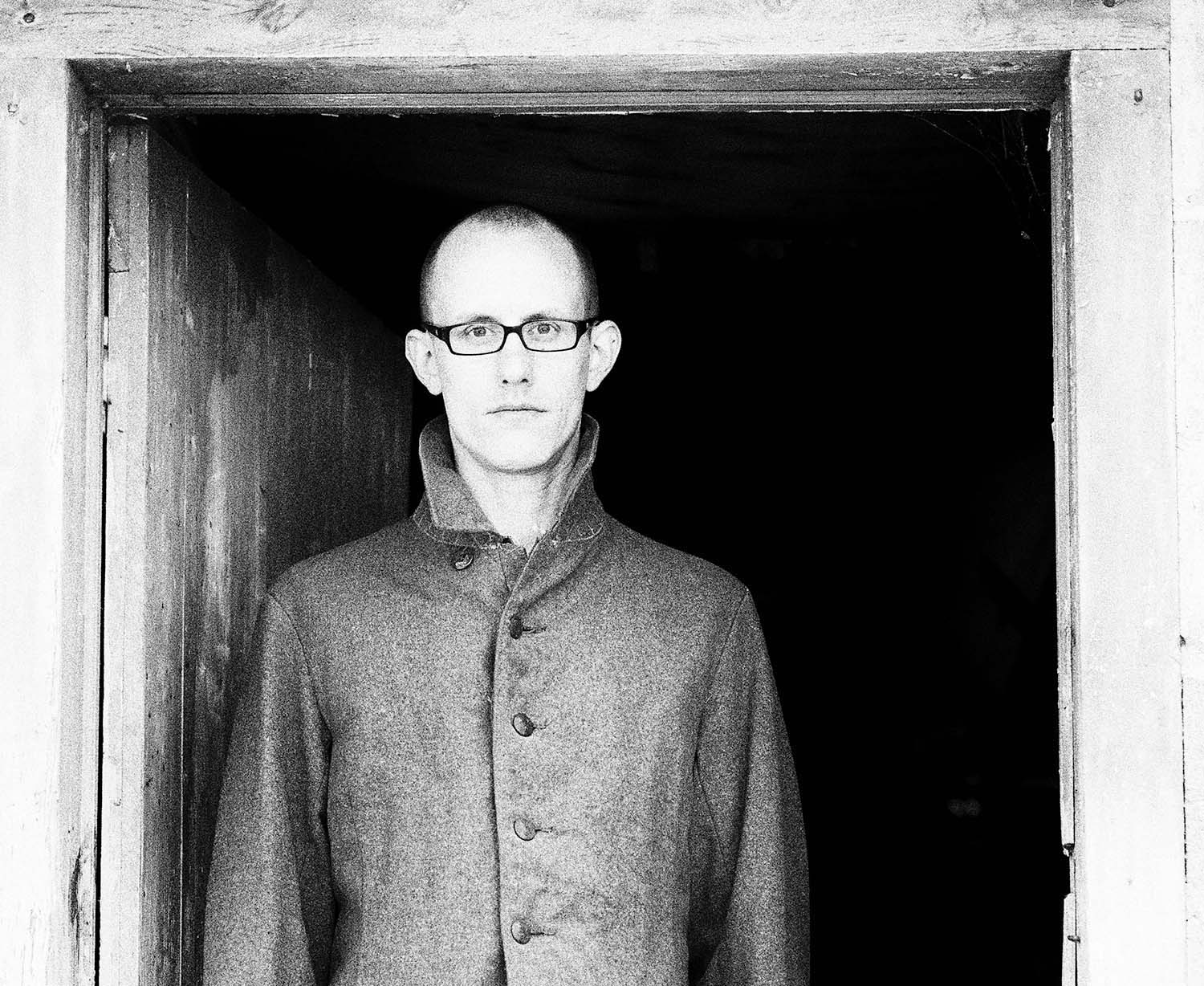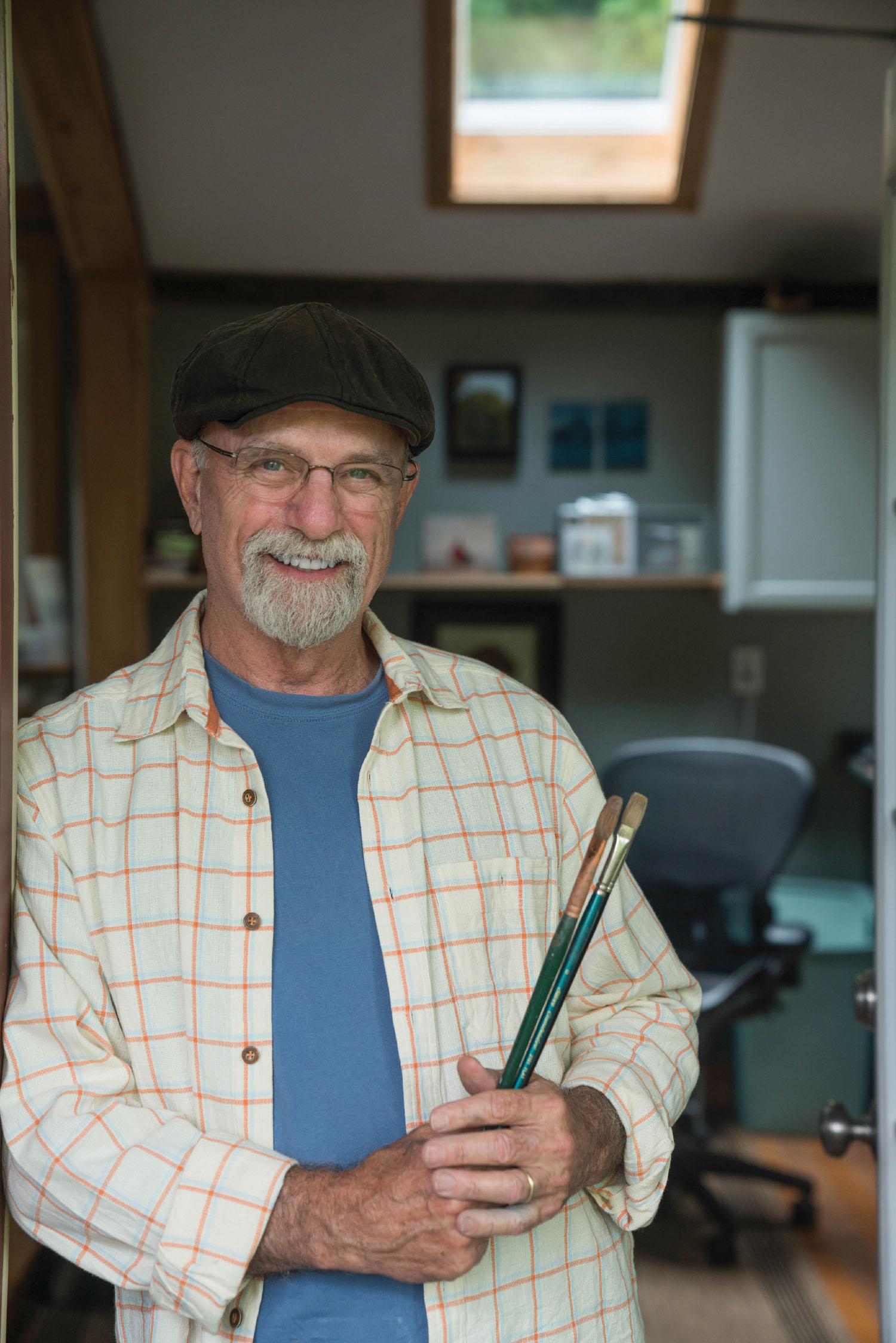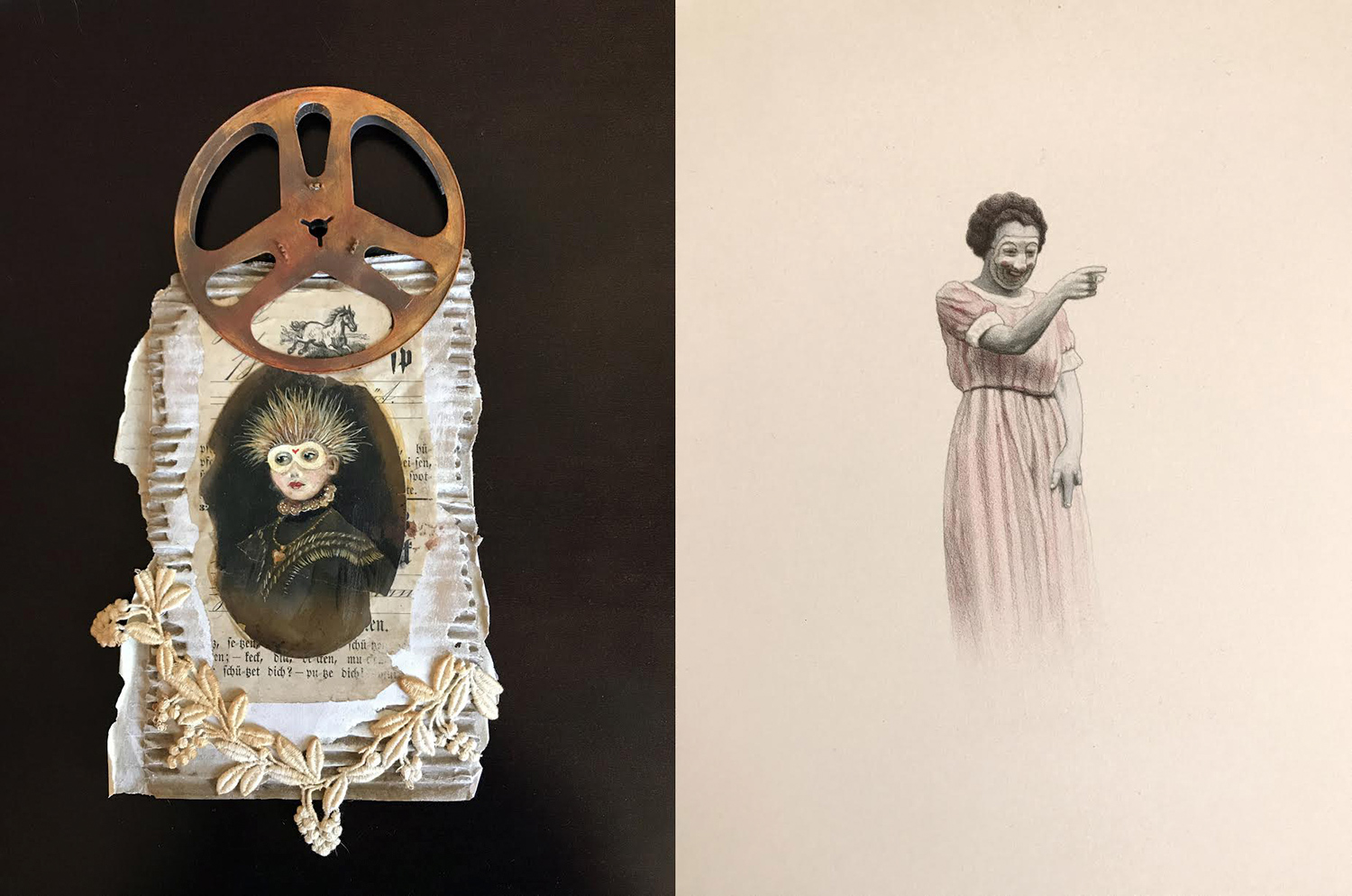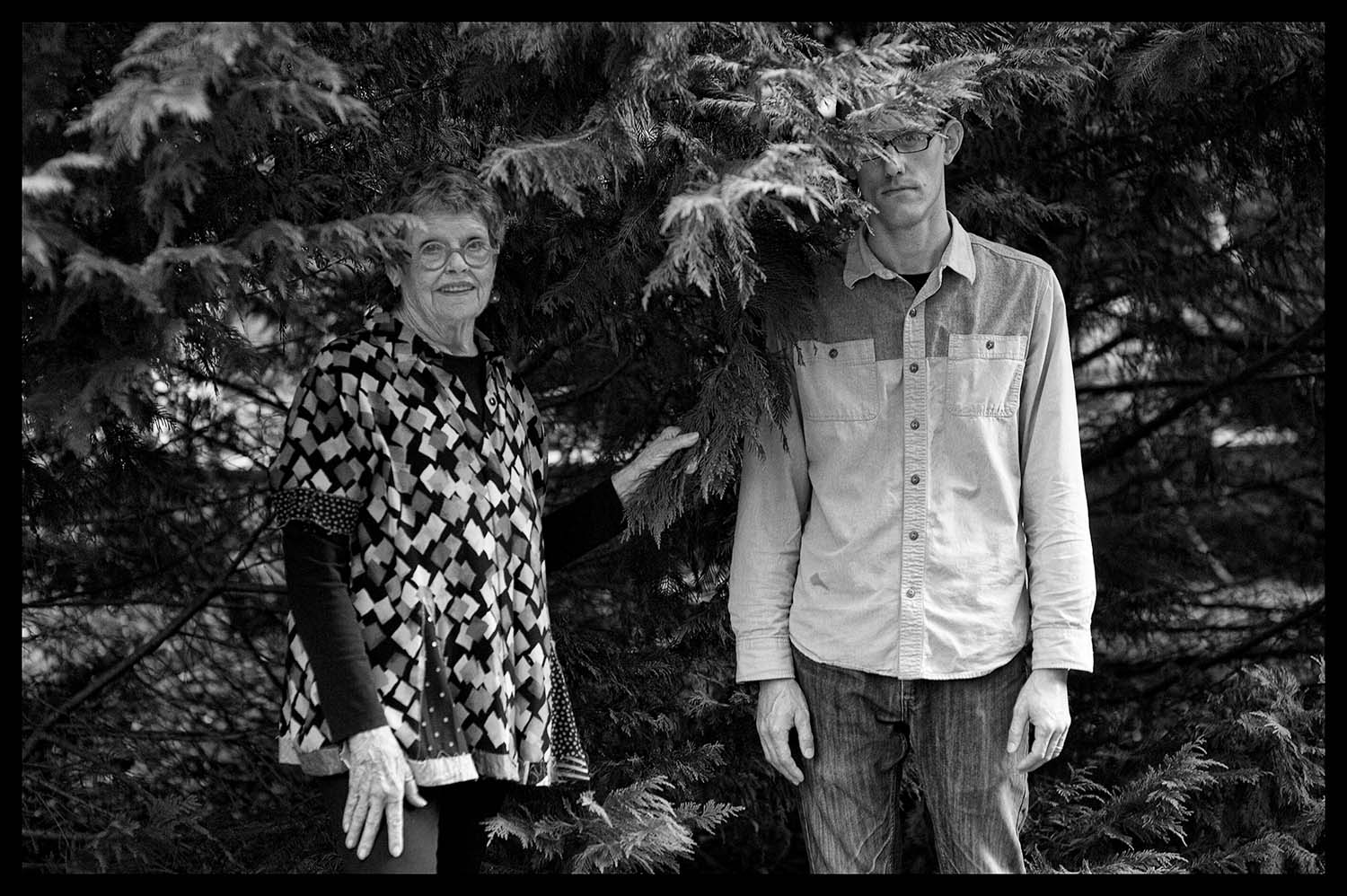
Chris Curtis prefers sketching to painting. “With the subtlety of my work, it’s a much better medium.” Photo by Rimas Zailskas
Surges of technology and centuries of tradition merge in the work of Hendersonville artist Christopher Charles Curtis, whose visually arresting drawings in graphite and colored pencil begin life digitally but reach their final form on paper. And not just on off-the-shelf art paper, but on the blank pages of old books, or on sheets salvaged from attics and garage sales. “I’m interested in mixing the past with the present, as well as the future,” says Curtis. “I feel that drawing on old paper and books adds another layer to my subject matter.”
That subject is the human figure, imaginatively enhanced or even appearing threatened in some way, often placed in settings drawn from the imagery of science fiction and fantasy films. Black clouds emerge from pyramids and stream toward a rustic cabin where a farmer and his family, who could be drawn from the Depression-era photographs of Walker Evans or Dorothea Lange, stand defiantly, staring out at the viewer. A cloaked woman with a Harlequin mask sends a bubble-like form toward a small boy it threatens to engulf. “With each image I’m trying to create something mysterious that verges on reality,” Curtis says, “something the viewer can relate to while recognizing it as fantasy.”

Flood
21.75″ x 7.25″ graphite, colored pencil, watercolor, acrylic on album cover, 2015
Other pieces are less complex but no less mysteriously familiar in the form of traditionally drawn portraits, the faces covered with swaths of cloth or fragmented into an eye or a nose. These smaller works recall the classically based paintings of Belgian artist Michaël Borremans, who, like Curtis, combines traditional portraiture and genre painting with fantastical elements — and who also uses book covers, old paper, and cardboard as his drawing surfaces.
Curtis acknowledges him as a major influence, but he adds, “I can’t remember when I decided to start working with found material. Sometimes I’ll draw on the inside cover of the book or on a blank page within the book. I also received some paper from a friend of mine that came out of a photo album he found in his grandparents’ attic. It has a great aged look and adds quite a lot to the drawings.”
Curtis’ pieces may begin as photographs he discovers which are digitally collaged with disparate elements and tweaked in their color, contrast, and other values. He adds his sketching via computer pen. “I get a lot of inspiration from old photographs,” he says. “For me, it’s about bringing the photos back to life in some way and giving them new meaning.” In the case of the storm clouds looming over the overalls-clad farmer, the viewer is uncertain if the family is threatened by the storm or if they are its source.

Catching Adam
10.75″ x 7.5″ graphite, colored pencil, watercolor, ink on book cover, 2016
Larger works begin as drawings directly on paper in traditional fashion. Once the basic idea is produced, “I sort of make it up from there,” Curtis says. “It’s much more interesting for me if the process is somewhat of a mystery. My work takes a long time to create, so I can get bored with something if it doesn’t surprise me along the way.”
His attraction for drawing rather than painting stems from his years at San Francisco’s Academy of Art, where the approach was classical and academic in both mediums. “Painting never felt right to me the way drawing does,” he says. “With the subtlety of my work, I feel drawing is a much better medium.” After 15 years living and working on the West Coast, Curtis and his wife were drawn by family ties to Western North Carolina and settled in Hendersonville two years ago. He found work at the art-supply store The Starving Artist, which began showing some of his drawings. That led to this summer’s exhibition of his work at the city’s new Canvas gallery on South Church Street.
Among the pieces in the Canvas show is a newer series of larger drawings that are more traditional in content and composition, what Curtis terms more “well defined drawings” in simpler monochrome (his earlier work sometimes incorporated watercolors or acrylics). Still, the enigmatic atmosphere remains: something vaguely menacing is implied.
“I seem to always go back to this idea of people standing around as if nothing is wrong while a storm approaches in the distance,” he says. “It seems that as people, we sometimes ignore the things we fear until it’s at our front door.”
Christopher Charles Curtis’ work will show at CANVAS ArtSpace (212 S. Church St.) in Hendersonville until July 4th. 828-577-4590. canvaswnc.com. On Instagram: C3ChrisCurtis.



